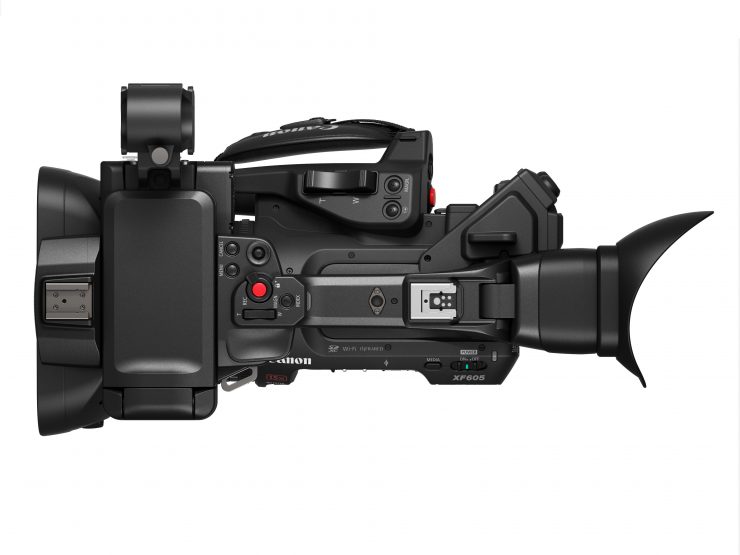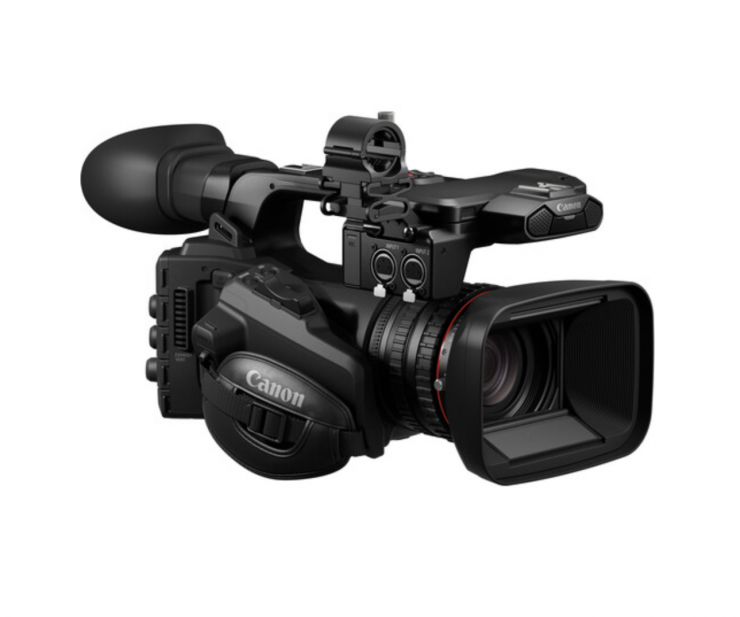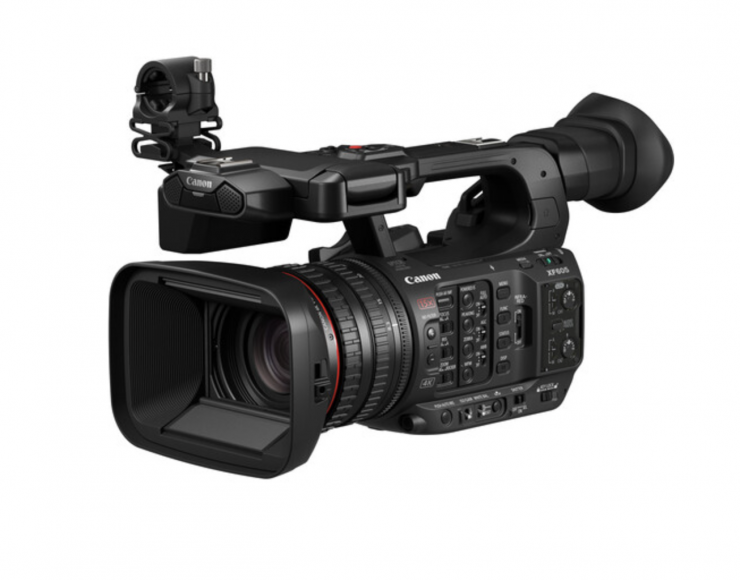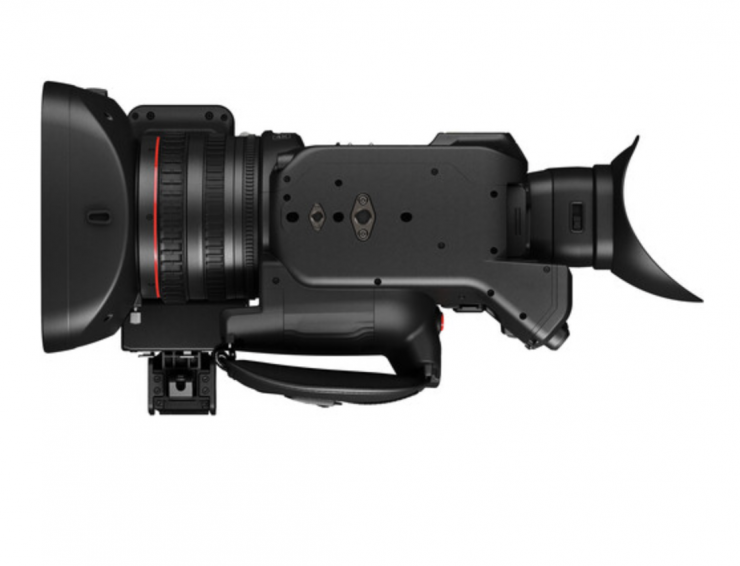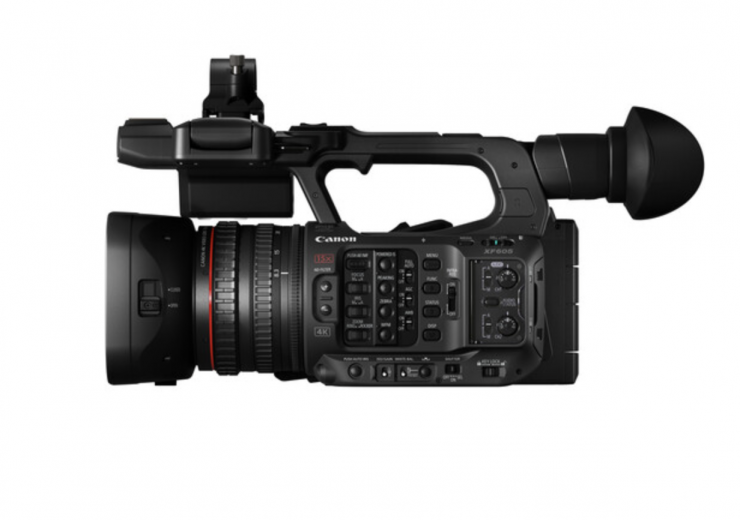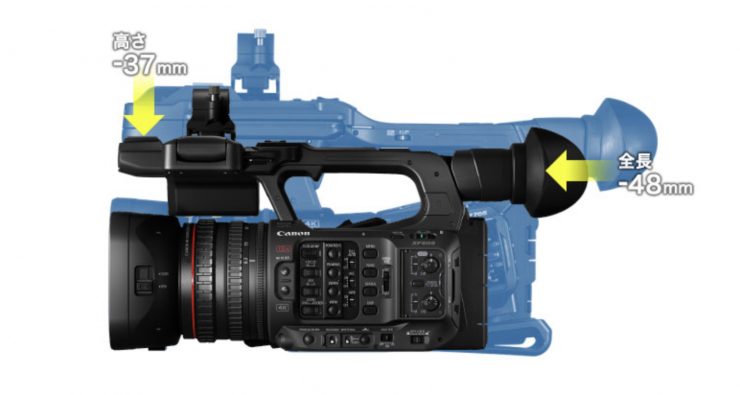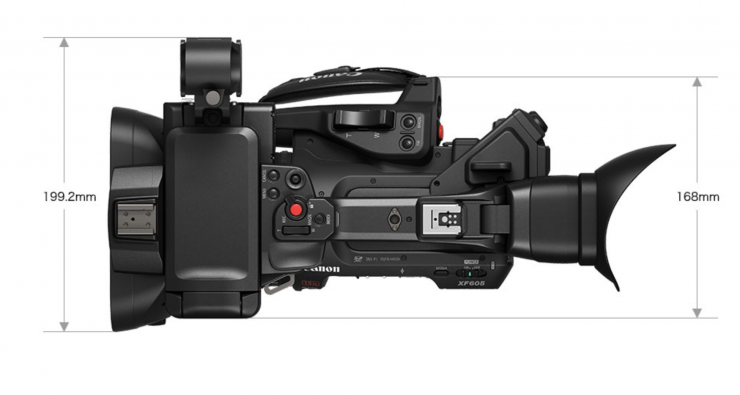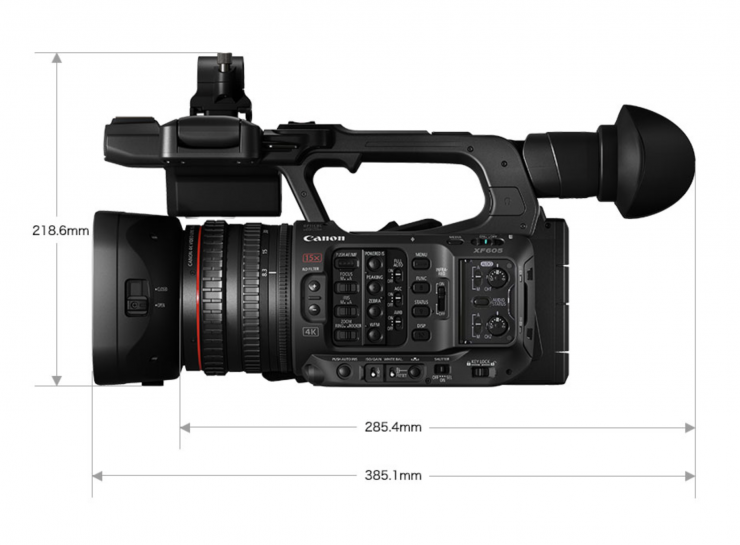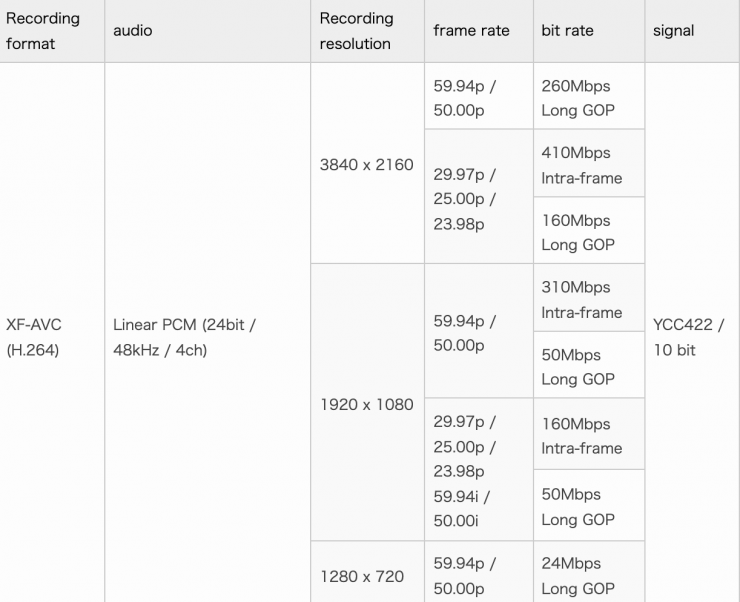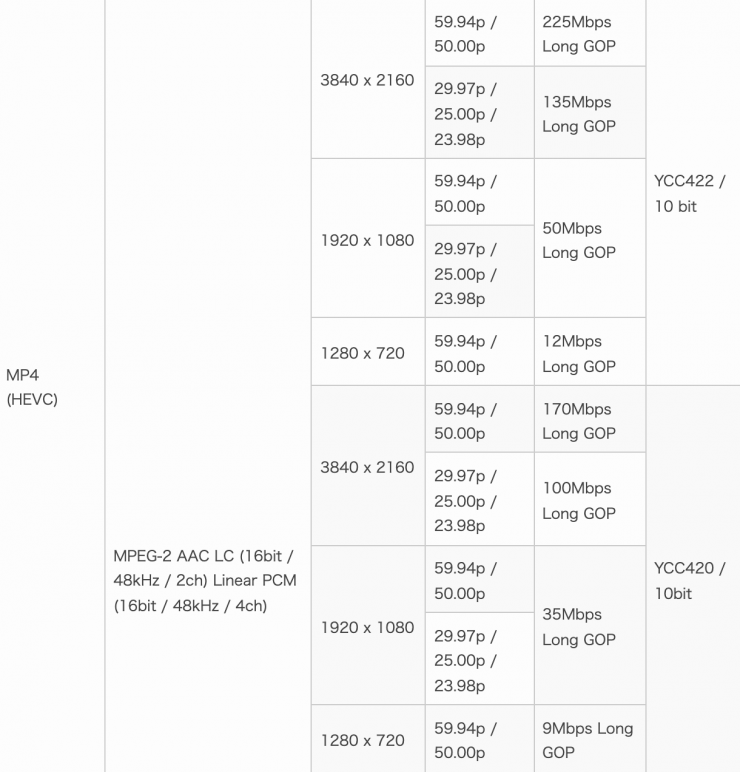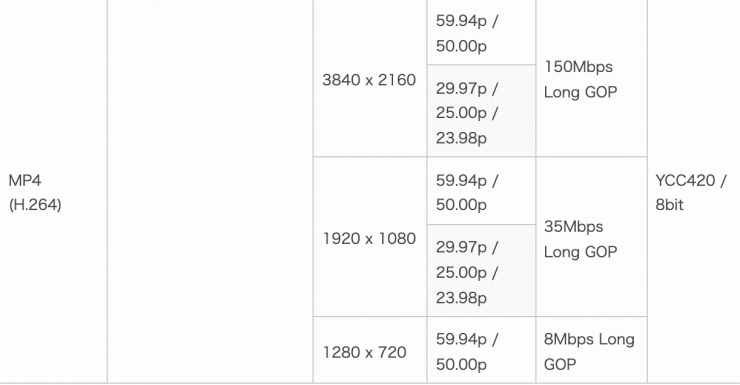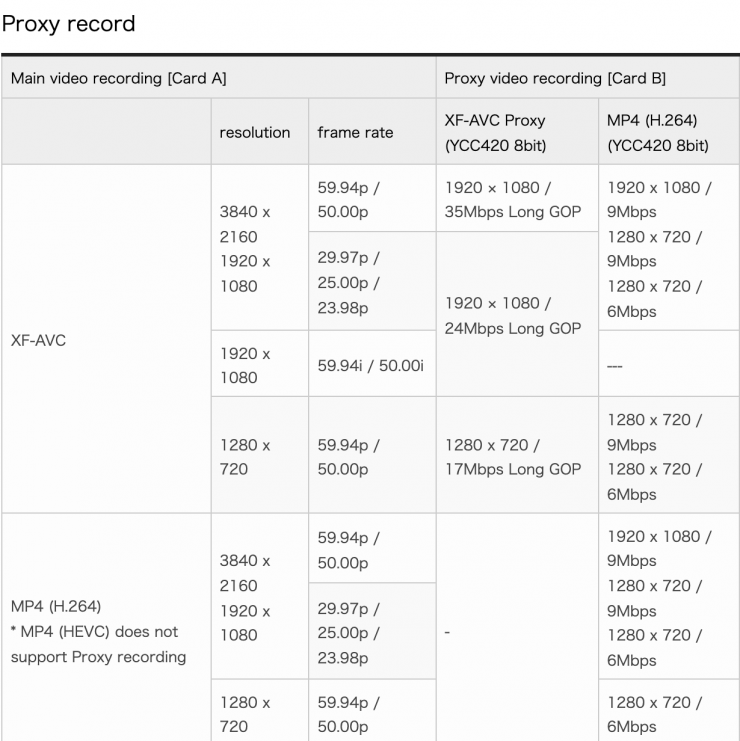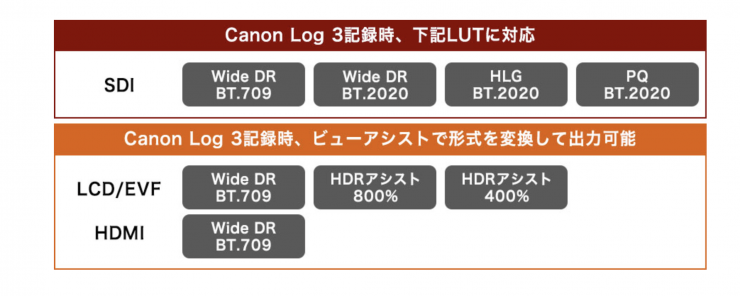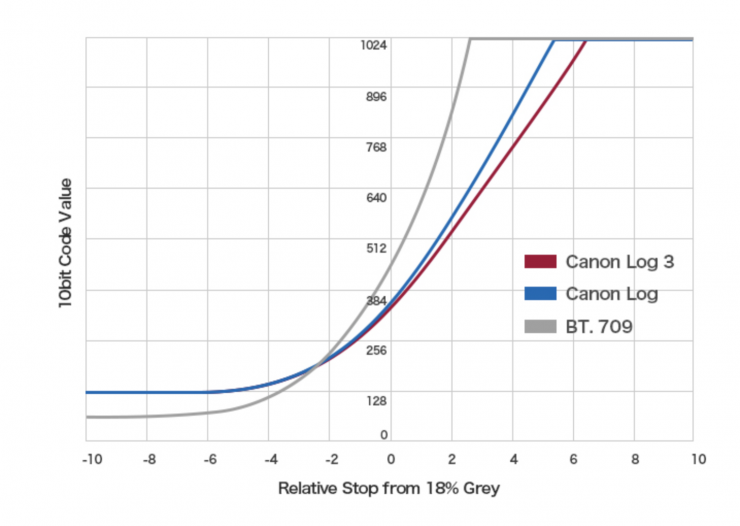Canon has announced the XF605. This is a Pro camcorder that features a 1″ type CMOS sensor and is capable of capturing UHD at up to 60p in 4:2:2 10-bit.
It also has 12G -SDI, HDMI, Timecode IN/OUT. dual XLR inputs, built-in ND, and the ability to capture in Canon Log 3.
The XF605 follows the same philosophy as other Canon XF cameras. Canon designed it to meet the following criteria:
- Image Quality
- Connectivity
- Usability
- Mobility
Despite the plethora of S35 and full-frame cameras that are out there, there is still very much a place for smaller-sized sensor fixed lens cameras. It is about choosing the right tool for the right job. For quite a few applications a fixed lens Pro camcorder makes a lot more sense than using a mirrorless or digital cinema camera.
Cameras such as the XF605 offer a ton of functionality, good recording capabilities, good onboard audio, and they can be used to cover a wide array of shooting scenarios.
For a lot of news and event coverage, a fixed-lens camcorder like this makes a lot more sense than using a mirrorless or digital cinema camera.
Size & Weight
The XF605 weighs in at approx. 2.01kg / 4.43lb which makes it around 600g lighter than the XF705. It is also 48mm shorter in length and 37mm shorter in height.
It is good to see that Canon managed to make it lighter and smaller than the XF705 without having to get rid of outputs/inputs, etc.
Sensor & Processor
As I already mentioned, the XF605 features a 1″ type CMOS sensor. This is a 13.4 Megapixel (4268 x 3148) Actual, 8.29 Megapixel (3840 x 2160) Effective sized sensor. I believe it is the exact same sensor that is found in the XF705.
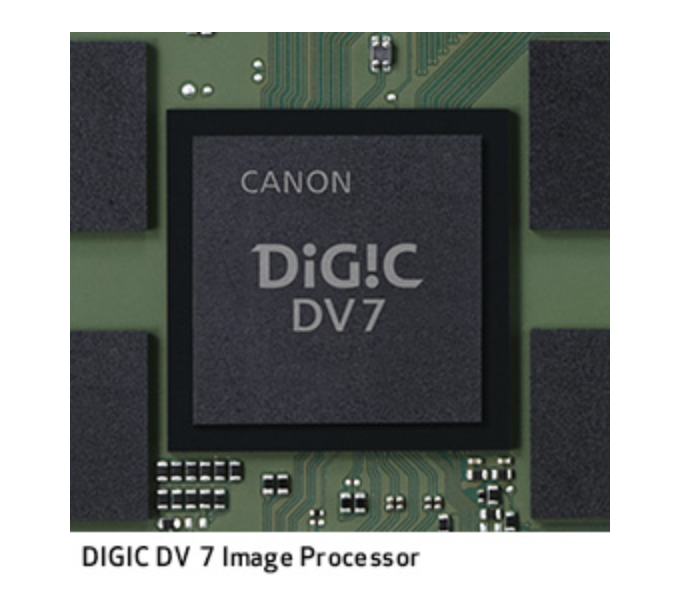
Where it does differ from the XF705 is that it uses Canon’s latest Digic DV 7 processor. The XF705 uses the older Digic DV6.
The ISO range of the camera is ISO200 – ISO12,800.
Recording Capabilities
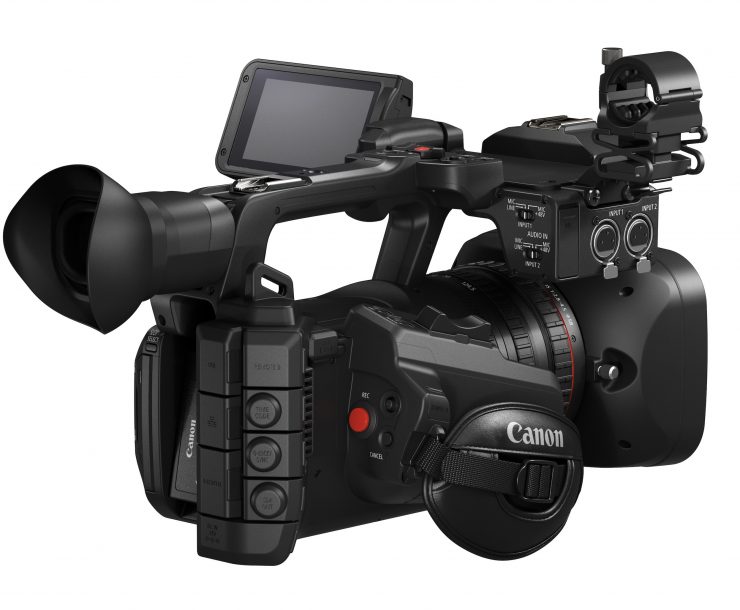
Canon received a lot of complaints from owners of the XF705 because that camera can only capture H.265/MXF/XF-HEVC 4:2:2 10-Bit unless you wanted to shoot 1920 x 1080p at 24/25/30/50/60 fps (45 Mb/s) which was done in H.264.
H.265 is great for keeping file sizes small, but it can be problematic when it comes to editing. So what Canon did with the XF605 is to give you the option of recording in either H.265 or H.264 in all resolutions and framerates.
The XF605 can record in the following resolutions and framerates:
H.265/MXF/XF-HEVC 4:2:2 10-Bit
3840 x 2160p at 24/25/30/50/60 fps (160 Mb/s)
3840 x 2160p at 24/25/30/50/60 fps (110 Mb/s)
1920 x 1080p at 24/25/30/50/60 fps (60 Mb/s)
1920 x 1080p at 24/25/30/50/60 fps (45 Mb/s)
1920 x 1080i at 50/59.94 fps (160 Mb/s)
1920 x 1080i at 50/60 fps (110 Mb/s)
1920 x 1080i at 50/60 fps (60 Mb/s)
1920 x 1080i at 50/60 fps (45 Mb/s)
1920 x 1080p at 120 fps (180 Mb/s)
H.264/MXF/XF-HEVC 4:2:2 10-Bit
3840 x 2160p at 24/25/30/50/60 fps (160 Mb/s)
3840 x 2160p at 24/25/30/50/60 fps (110 Mb/s)
1920 x 1080p at 24/25/30/50/60 fps (60 Mb/s)
1920 x 1080p at 24/25/30/50/60 fps (45 Mb/s)
1920 x 1080i at 50/59.94 fps (160 Mb/s)
1920 x 1080i at 50/60 fps (110 Mb/s)
1920 x 1080i at 50/60 fps (60 Mb/s)
1920 x 1080i at 50/60 fps (45 Mb/s)
1920 x 1080p at 120 fps (180 Mb/s)
H.264/MXF/XF-AVC 4:2:0 8-Bit
1920 x 1080p at 24/25/30/50/60 fps (45 Mb/s)
The camera is also capable of double, relay, proxy, and simultaneous recording to SD cards. It is nice that you can simultaneously record in different resolutions, formats, and color sampling. Canon recommends that you use Class U3 V90 cards, however, lower-rated cards will work with a lot of the resolutions and framerates.
On a 128GB SD card you can record for the following times:
- XF-AVC: 410Mbps 39 mins
- XF-AVX: 310Mbps 51 mins
- XF-AVX: 260Mbps 100 mins
- MP4/H.265: 225 Mbps 71 mins
- MP4/H.265: 170Mbps 94 min
- MP4/H.265: 135 Mbps 118 mins
- MP4/H.264: 150 Mbps 107 mins
- MP4/H.264: 35 Mbps 458 mins
- MP4/H.264: 8Mbps 2006 mins
With the XF605 you can also do simultaneous audio recording. So, essentially you are recording vision and audio to one card while recording audio WAV files on the other. This allows you to hand off timecode matched audio files to a translator or a producer so they can log interviews etc. without needing large files.
This simultaneous audio recording also lets you capture audio even when you are recording high frame rates.
You can also take still images on the XF605. The max JPEG size is 3840×2160, but this depends on what shooting resolution you are in. Still images will get saved to the SD card slot B.
Over SDI/HDMI, the XF605 can output the following resolutions and framerates:
- 3840 x 2160: 59.94p/50.00p/29.97p/25.00p/23.98p
- 1920 x 1080: 59.94p/50.00p/29.97p/25.00p/23.98p/ 29.97PsF/25.00PsF 59.94i/50.00i
- 1280 x 720: 59.94p/50.00p
- 720 x 480: 59.94i
- 720 x 576: 50.00i
Lens
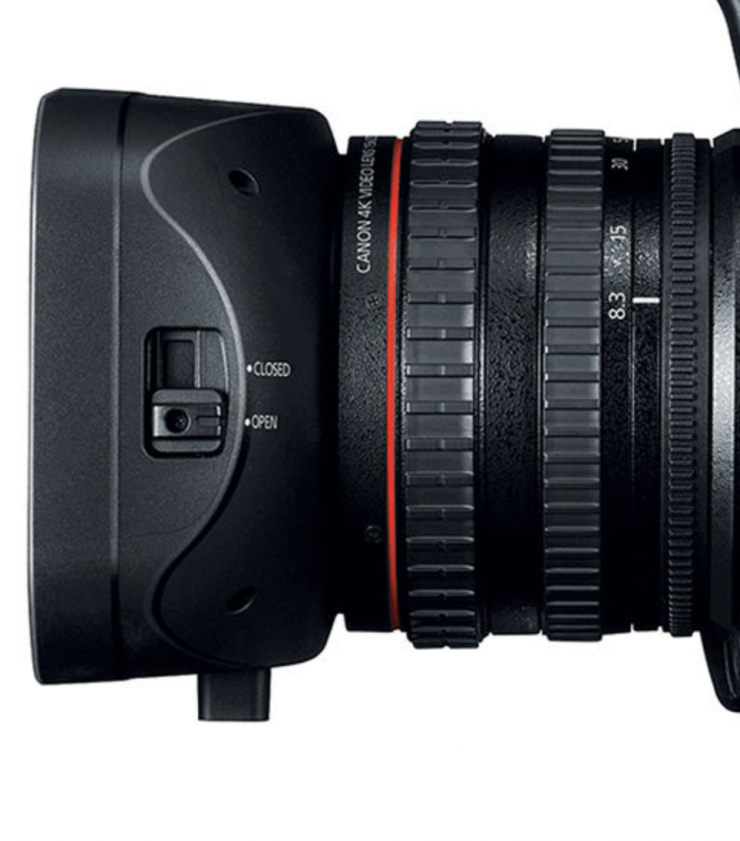
The XF605 features the exact same 15x lens that can be found on the XF705. This 15x optical, 30x digital zoom lens has a 25.5 to 382.5mm (35mm-equivalent) focal range and a variable aperture that goes from f/2.8 to f/4.5.
The lens features dedicated focus, iris, and zoom rings which is something that isn’t found on a lot of other fixed-lens camcorders like this.
The lens has a minimum focussing distance of 60 cm (2 ft.) throughout the zoom range; 1 cm (0.39 in.) at full wide-angle.
When using the lens you also get the added benefit of 5-axis image stabilization. This can be turned on/off. There are also four IS options available by combining different settings in Standard, Dynamic and Powered IS. Standard Mode just uses Optical IS. The Dynamic Mode uses a combination of Optical IS and Electronic IS.
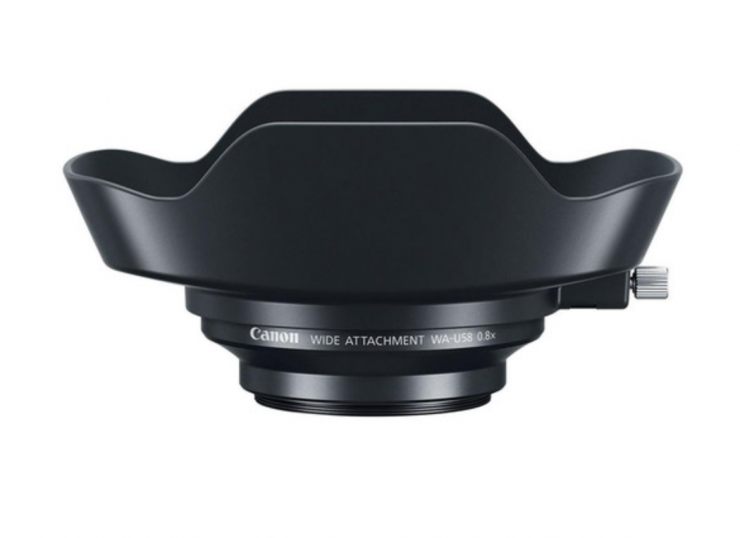
The lens isn’t particularly wide, but you can use it with Canon’s optional WA-U58 4K Wide-Angle Attachment Lens ($499 USD). The only issue with this adapter is it isn’t a shoot-through adapter. That means you can only use it when the lens is left at its widest focal length.
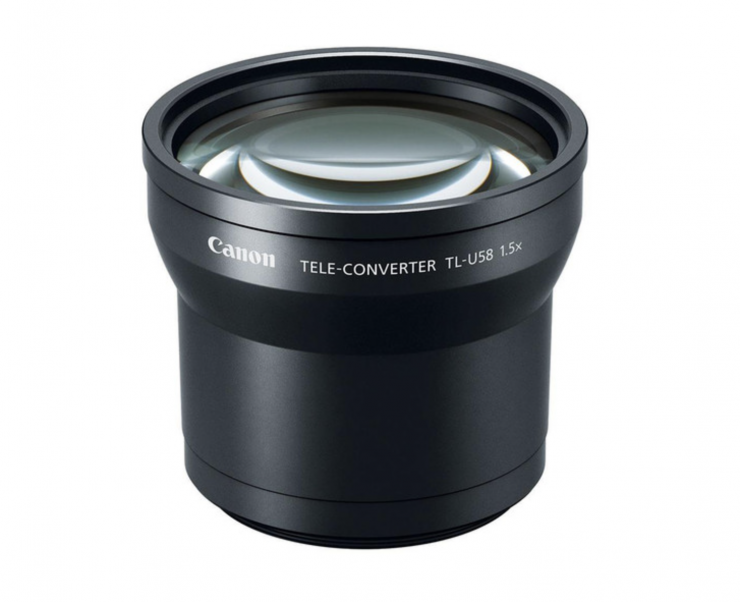
If you need a longer reach there is also a TL-U58 Tele-Converter Lens (1.5x) ($499 USD).
Auto Focus
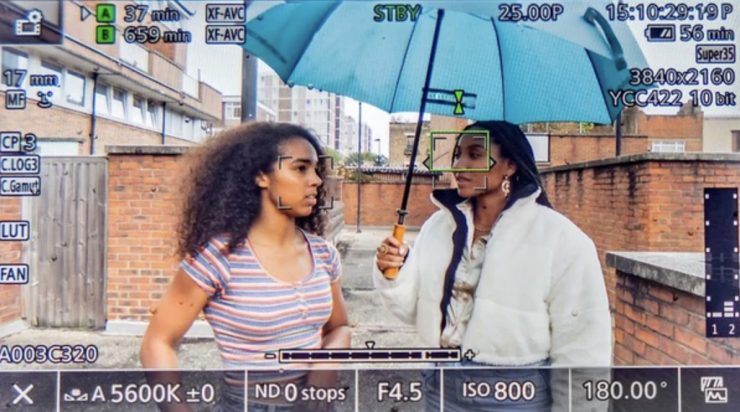
When it comes to AF capabilities, the XF605 has Canon’s Dual Pixel AF, and the EOS iTR AF X (head detection). It is also the first Canon XF camera to get Eye AF capabilities.
Touchscreen
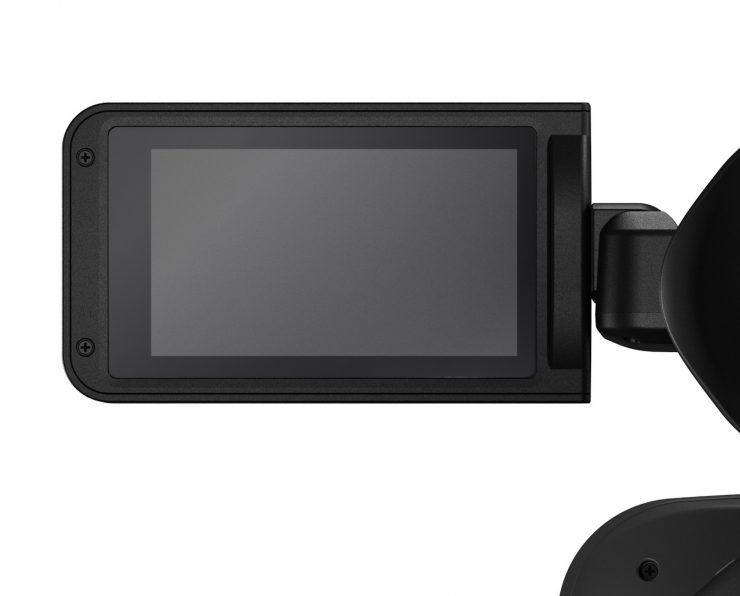
The XF6065 utilizes a touchscreen and a menu system that is very similar to that of the Canon C70. You can access various functions and make changes directly on the touchscreen without having to go into deep menus.
These touchscreen functionality shortcuts on the LCD screen work exactly the same as they do on the C70. Canon has literally taken the same system from the C70 and transferred it to this system.
The touchscreen is a 3.45-inch type with approx. 2.76 million dots. This is smaller than the 4.0-inch type touchscreen on the XF705 that has approx. 1.2 million dots, but it should be a lot better to view.
Built-in ND Filters
The XF605 features built-in ND filters. You can choose from clear/ 1/4, 1/16, and 1/64.
LOG & HLG/PQ
The XF605 can record in Canon Log 3, HLG, and PQ. It is also able to shoot in a variety of different picture profiles. The picture profiles and Log profiles are as follows:
- C1: BT.709 Normal
- C2: BT.709 Wide DR
- C3: BT.709 Standard
- C4: Canon Log 3
- C5: PQ (BT.2020)
- C6: HLG (BT.2020)
- C7: EOS Standard
- C8: EOS Neutral
- C9 – C20: User Defined
It is interesting to see that there is no Canon Log or Canon Log 2 available.
Inputs & Outputs
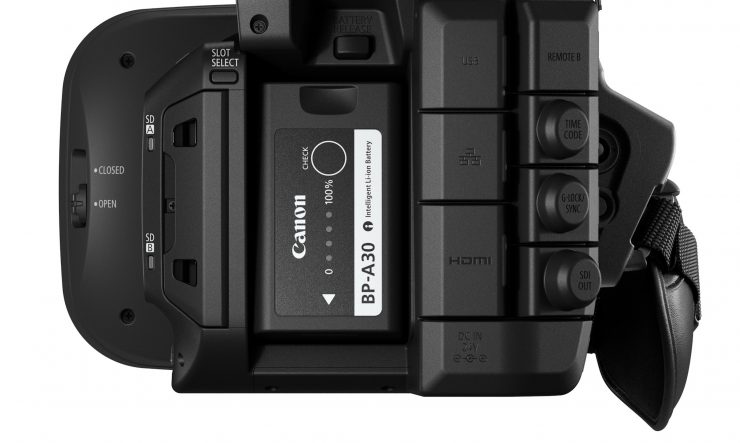
The XF605 has a very comprehensive set of inputs and outputs. Here is what is available:
- 12G-SDI Out
- HDMI Out
- USB-A
- USB-C
- BNC Timecode In/Out
- BNC Genlock/Sync
- 3.5mm stereo mini-jack
- Headphone jack
- Accessory Shoe
- Wi-Fi 2.4GHz/5GHz
You can simultaneously output over SDI and HDMI at the same time. You can also choose what resolution goes over each output.
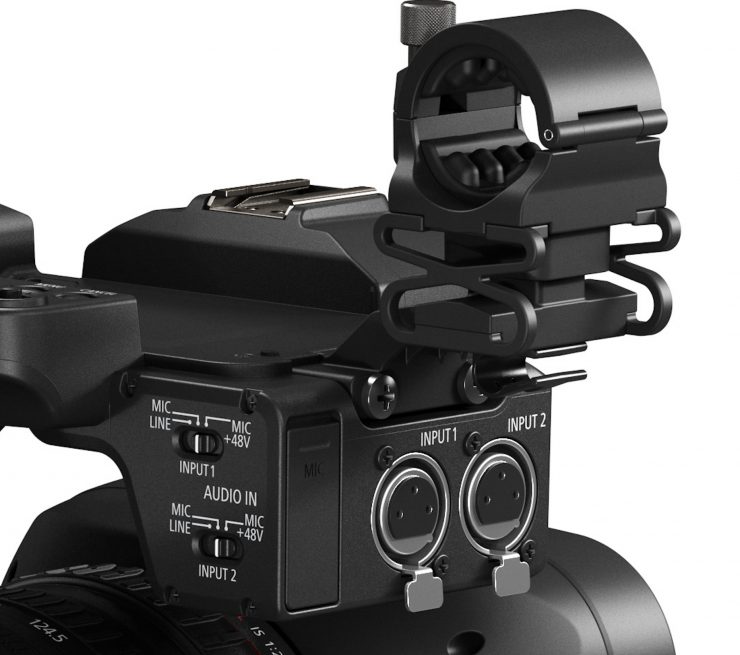
The XF605 has good onboard audio capabilities with dual XLR inputs and a 3.5mm stereo mic input. You can record up to four channels of audio. It is interesting to note that the XLR module being used on the XF605 is the CA-XLR2d-C high definition XLR microphone adapter that is actually made by TEAC. The adapter makes it possible to assign XLR inputs to all four audio channels.
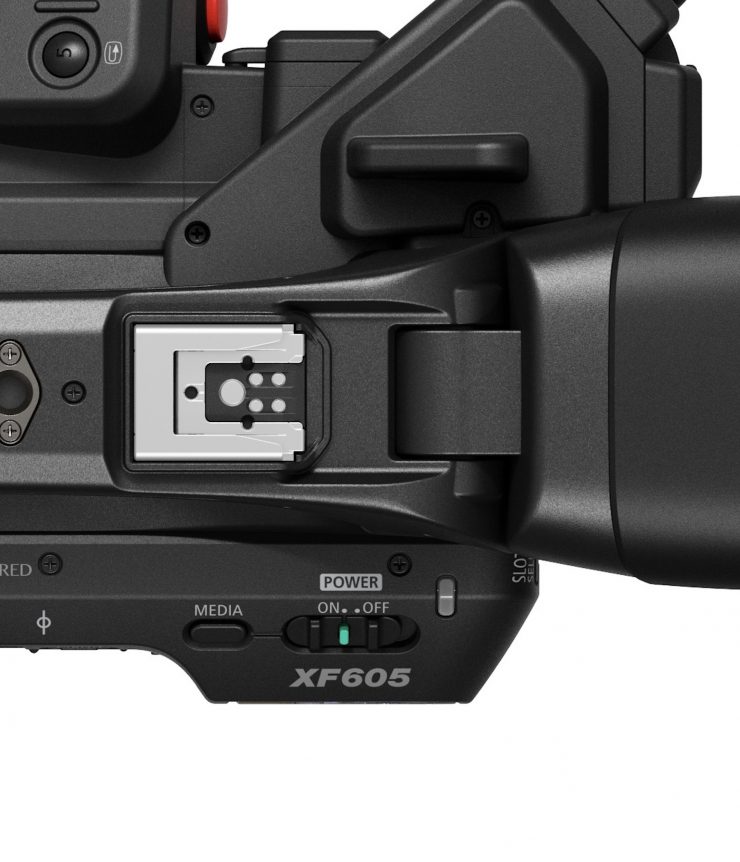
There is also a new accessory shoe that Canon is using on this camera that will be compatible with future, unreleased products.
IP Streaming
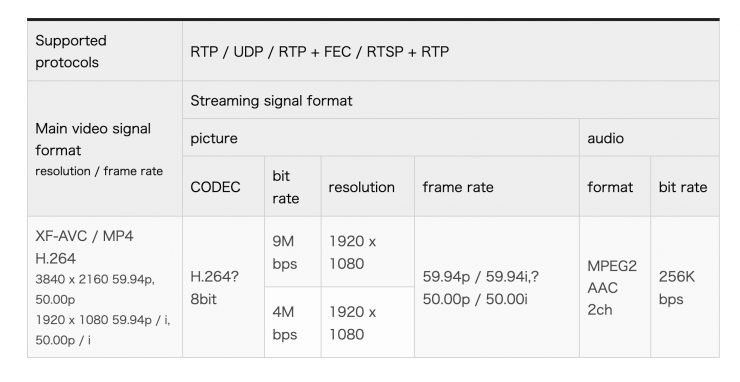
The XF605 has built-in WiFi (2.4GHz or 5GHz depending on the region) so it is set up to be able to stream live or sed material to an FTP server.
Canon has a new Content Transfer Mobile (CTM) phone app. As far as I am aware this is only available for iOS devices.
This app allows users of the camera to download MP4, XML metadata, and audio proxies directly to their phones. You can then choose and upload content from your phone directly to an FTP server. There is also a new metadata function where you can add information on your phone that then gets embedded in the file you send.
The interface on the CTM app allows you to view and clearly see your footage. You can also see information about the clip including the file size and when the clip was captured.
Where does this camera sit in Canon’s XF line-up?
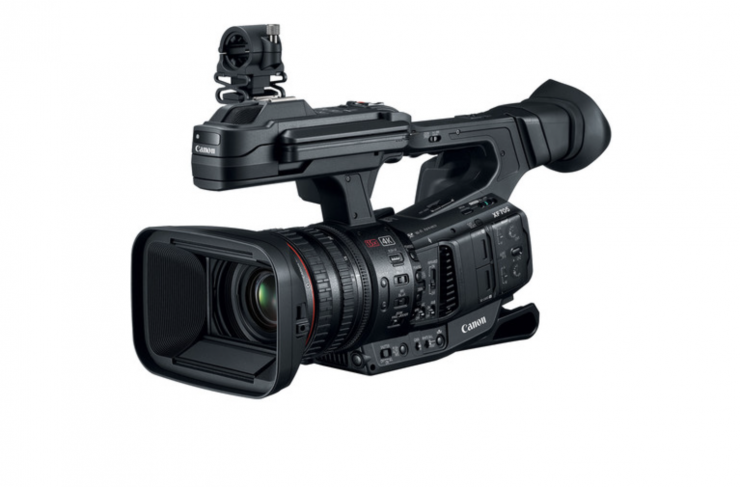
XF705
The XF605 sits underneath the XF705, although both cameras share a lot of similarities and features. Canon UK told me that the XF705 will probably get discontinued, however, Canon USA told me that is not the case.
Price & Availability
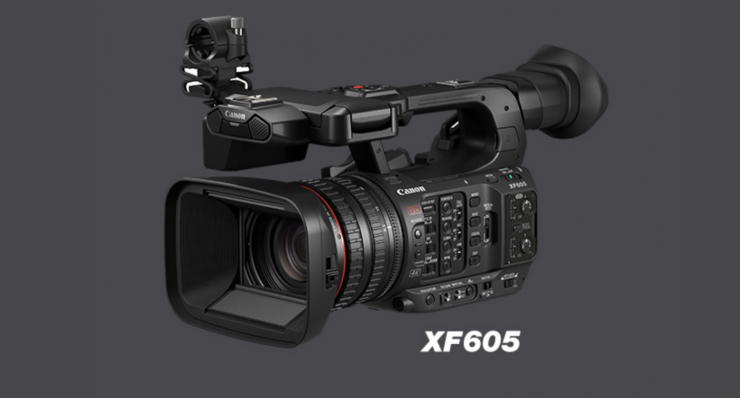
The XF605 will retail for $4,499 USD

